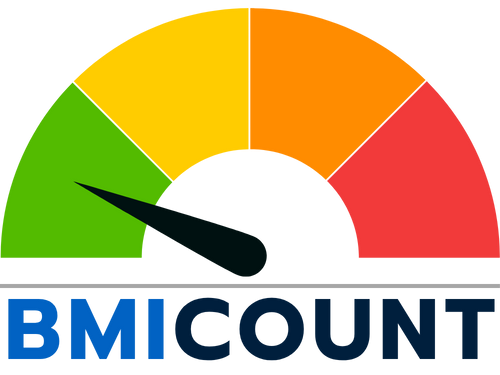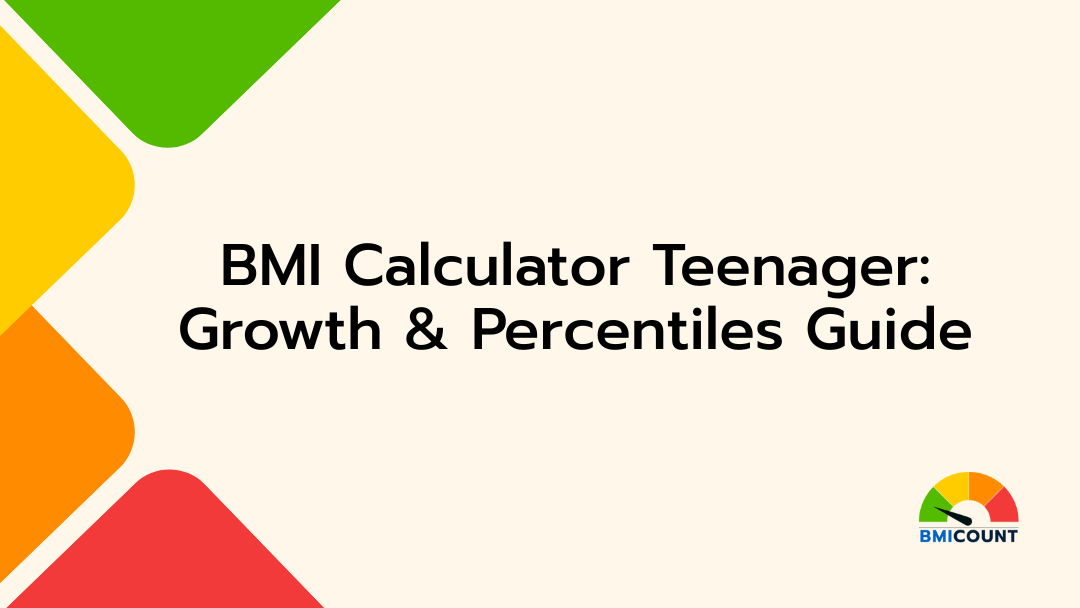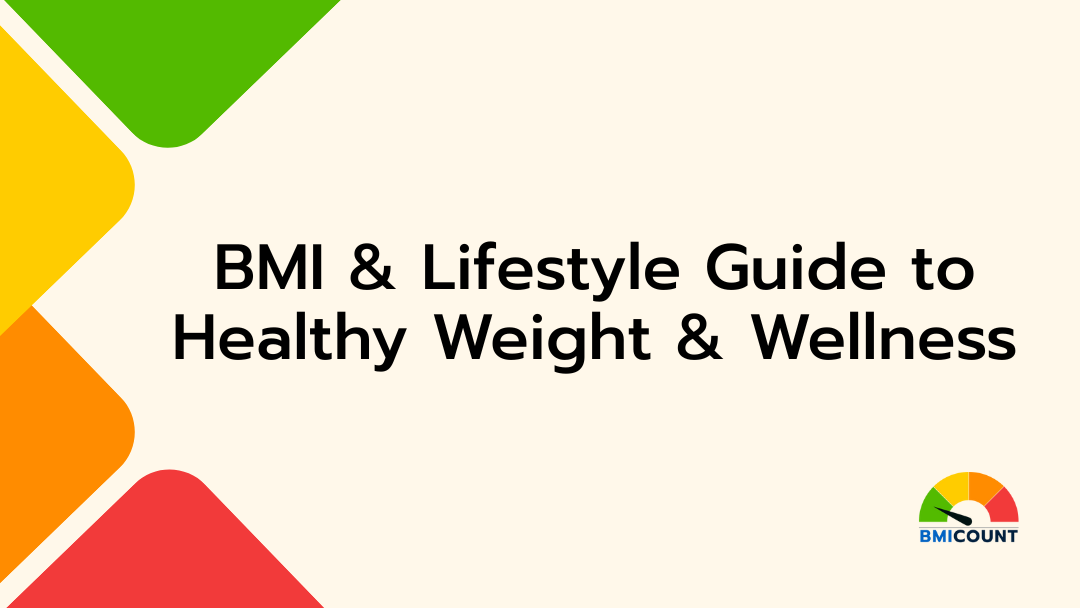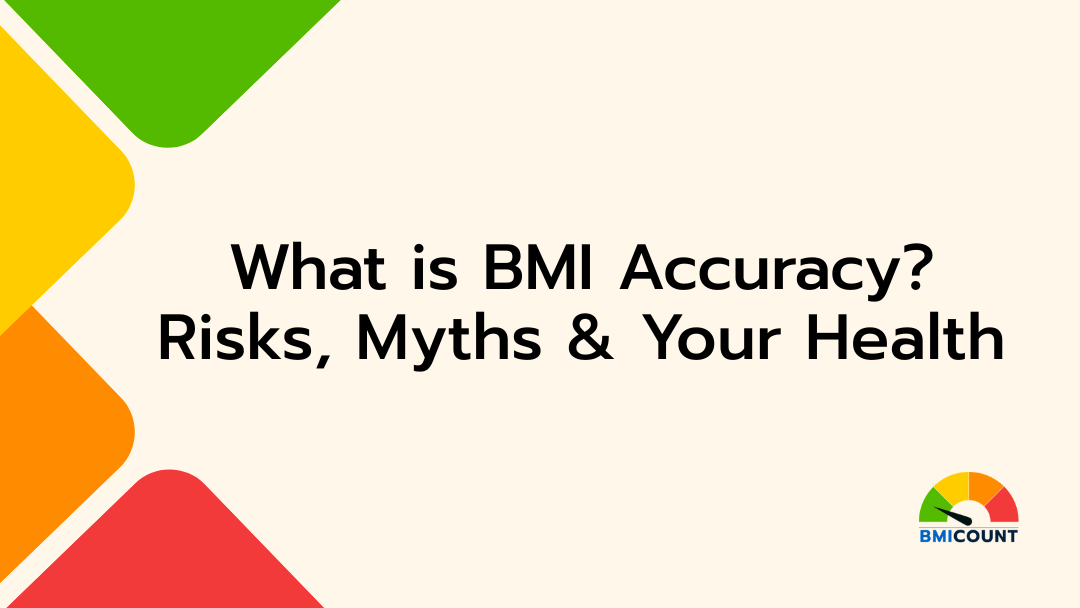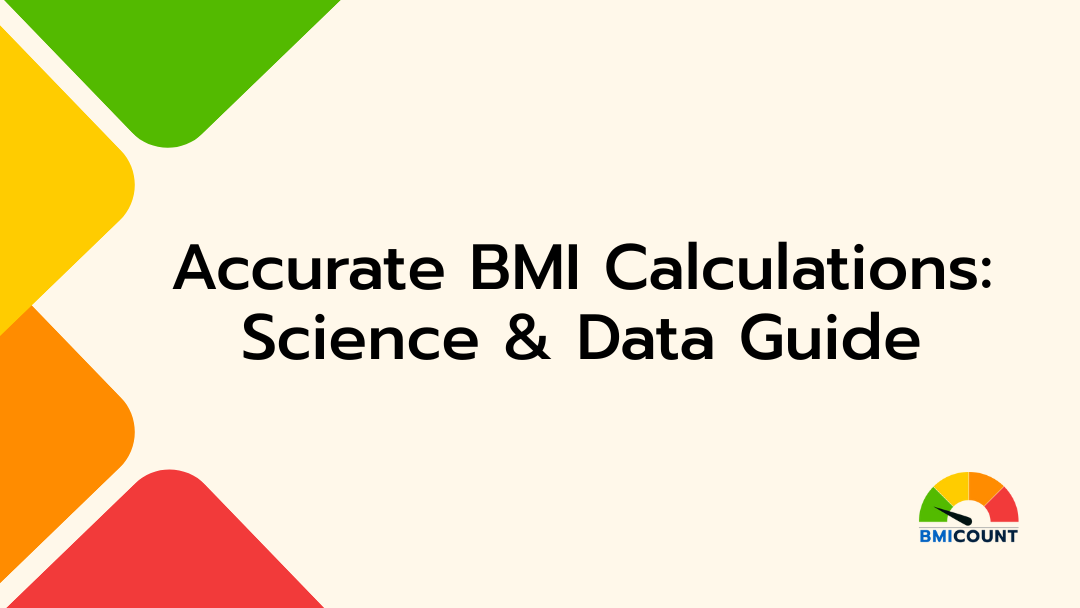The teenage years are full of changes physically, emotionally, and socially. So it’s no surprise that trying to understand a teenager’s body weight or BMI can be confusing. During adolescence, rapid growth, hormonal shifts, and differences in body composition make this a unique stage of development.
That’s why traditional adult BMI ranges don’t apply here Teen BMI.
If you’ve used a BMI Calculator Teenager, you’ve probably seen results listed as a percentile not a number like “22.5.” That’s because teenagers’ BMI is interpreted using age- and sex-specific growth charts, not adult cutoffs.
“Teen BMI isn’t just a number — it’s a moving target influenced by growth, hormones, and development.”
This blog will help you understand how to interpret teenager BMI results, what’s considered a healthy BMI range for teenagers, and how to navigate this stage with confidence — whether you’re a parent or a teen yourself.
Why BMI Works Differently for Teens
Unlike adults, teens are still growing and that means their weight, height, and body composition are changing constantly. This is why BMI Calculator Teenager tools are built around percentile curves, not fixed categories like “underweight” or “obese.”
How Teen BMI is Calculated:
- Just like adults: BMI = weight (kg) ÷ height (m²)
- But instead of comparing to a single range, it’s mapped against CDC growth charts
- These charts factor in age and biological sex
What Does a BMI Percentile Mean?
| Percentile Range | What It Indicates |
|---|---|
| Below 5th | Underweight |
| 5th–84th | Healthy Weight Range |
| 85th–94th | Overweight |
| 95th and above | Obese |
These ranges come from national survey data and help doctors understand if a teen is gaining weight in a way that aligns with typical development.
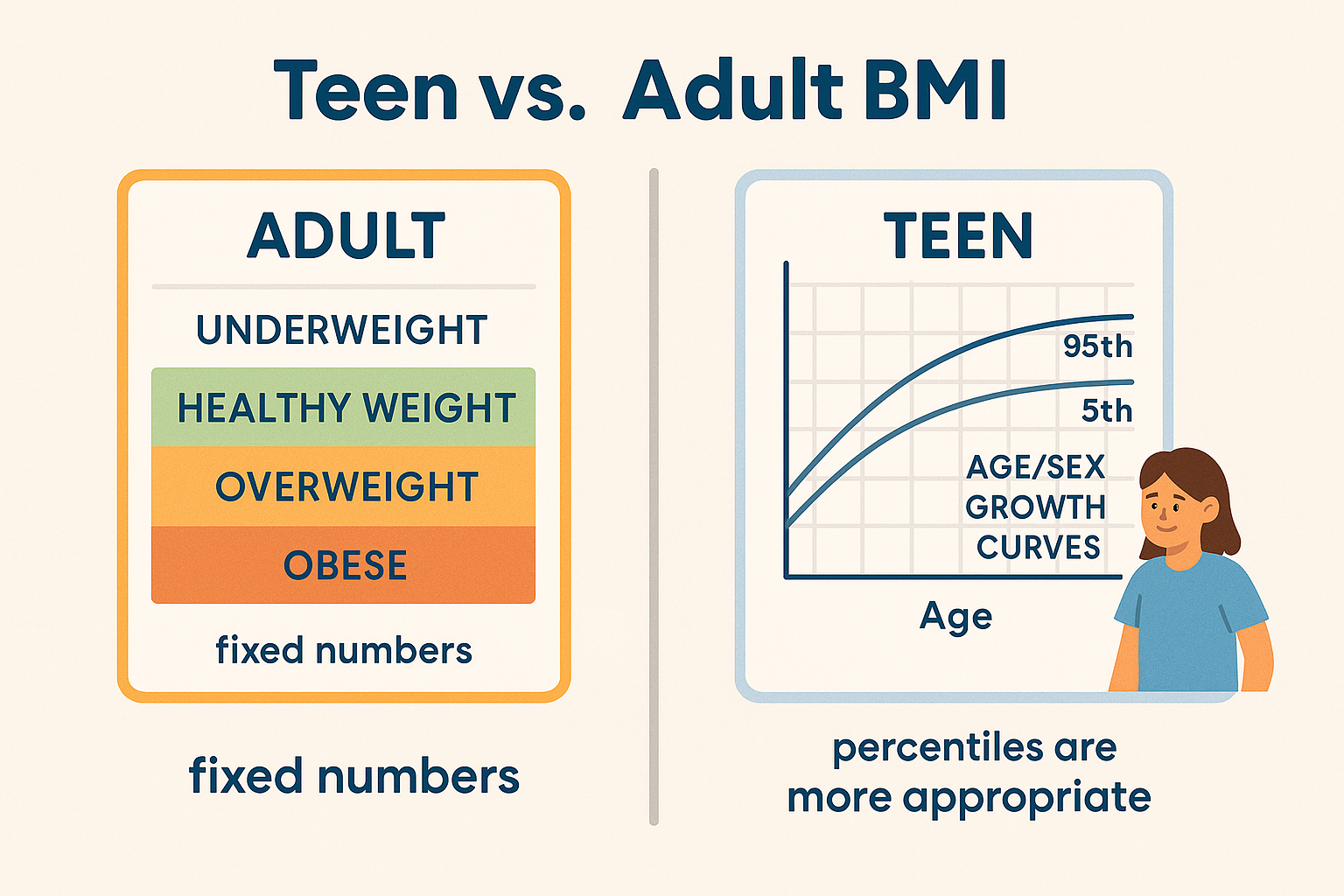
“A teen’s BMI percentile doesn’t just measure weight it reflects growth patterns unique to adolescence.”
Puberty and BMI: What Parents and Teens Should Understand
Puberty and BMI brings dramatic changes to a teenager’s body including height, weight, fat distribution, and muscle mass. Because of these rapid and uneven changes, it’s completely normal for a teen’s BMI percentile to fluctuate during adolescence.
That’s why it’s important to interpret BMI during this time with patience and perspective.
What Changes During Puberty?
- Hormones cause the body to redistribute fat and develop muscle
- Girls may gain more body fat as a normal part of development
- Boys typically build lean muscle and grow taller faster
- Growth happens in spurts, not always steadily
These biological changes can make a Puberty and BMI result appear higher or lower even if the teen is healthy it’s just the body adjusting.
Tips for Parents Interpreting BMI During Puberty:
- Focus on long-term trends, not single readings
- Talk to your pediatrician if a BMI percentile is consistently below the 5th or above the 95th
- Pair BMI insights with eating habits, activity levels, and emotional health
- Avoid comparing your teen to peerseveryone develops at their own pace
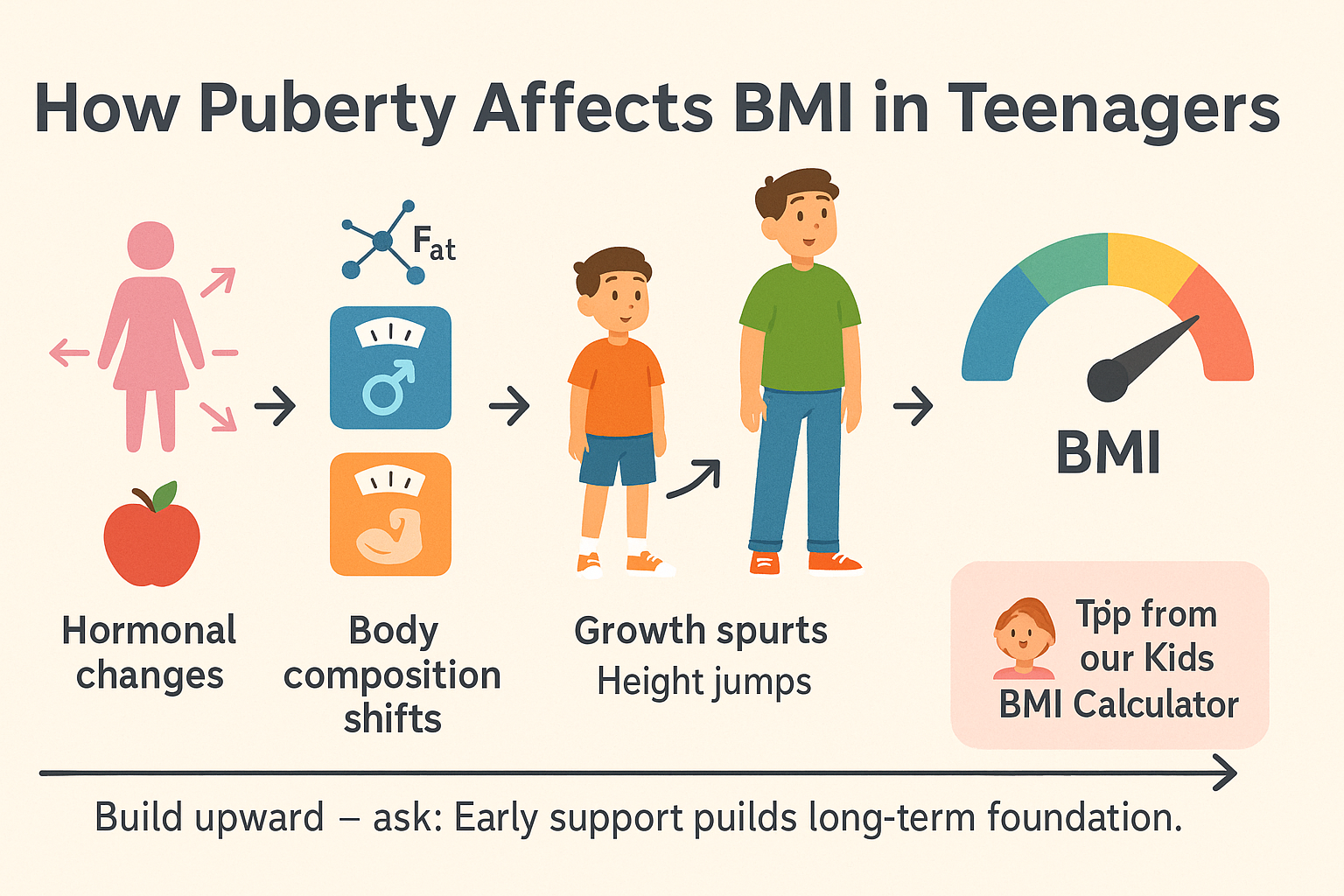
“Puberty can make BMI bounce around that’s not always a problem. It’s part of healthy development and growth.”
How to Use the Teen BMI Calculator the Right Way
Using a BMI Calculator Teenager tool is simple — but interpreting the result the right way is where the value lies. That’s because BMI during adolescence must be read in the context of age, biological sex, and developmental stage.
Step-by-Step: How to Check Teen BMI
- Go to the Teen BMI Calculator
- Enter:
- Age (13–17 years)
- Sex (male/female — based on biological sex)
- Height and Weight
- Activity Level (screen time vs. active play)
- Optional: Select a Healthy Habit Goal
- Click “Calculate BMI & Get Tips”
The tool will instantly show:
- BMI Value (e.g., 20.0)
- BMI Category (e.g., Healthy Weight)
- Percentile Range based on CDC standards
- Personalized lifestyle tips and Body Surface Area (BSA)
Example Result Interpretation
Based on the screenshot shared:
- Age: 15-year-old girl
- Height: 65 in | Weight: 120 lbs
- BMI: 20.0
- Result: Healthy weight (within 5th–85th percentile)
- Suggestions:
- Activity Tip: “Incorporate more movement and enjoyable activities.”
- Nutrition Focus: “Balanced Meals”
These insights make it easier to talk about weight in a non-judgmental, health-focused way.
Important Notes:
- The calculator is for screening, not diagnosis
- Always consult your doctor if you’re concerned about your teen’s weight
- Reassure teens that everyone develops at their own pace
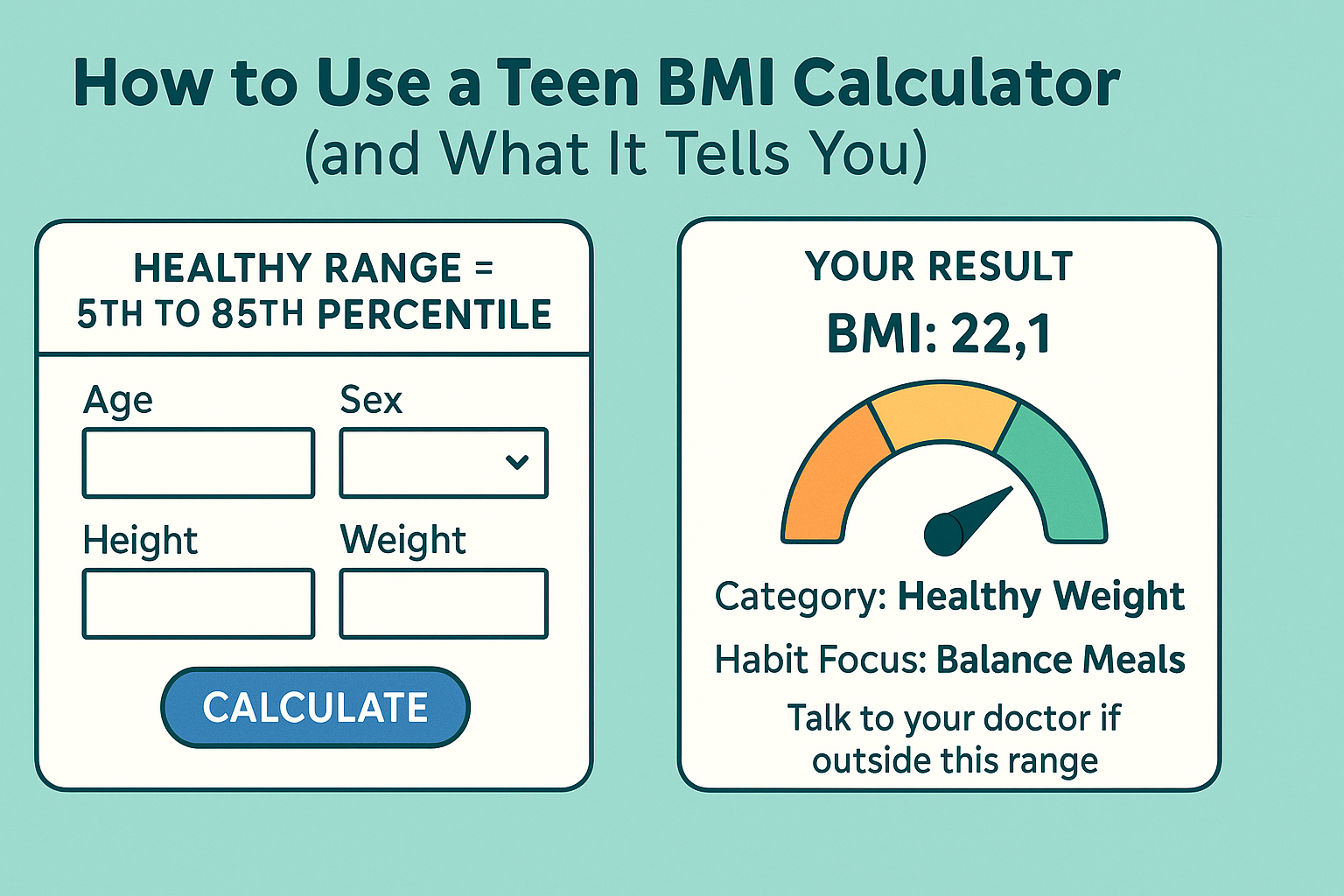
“Teen BMI calculators are most powerful when paired with positive habits not fear or fixation on numbers.”
Interpreting Teen BMI Results with Confidence
Unlike adults, teens aren’t measured against fixed BMI cutoffs. Instead, BMI results are compared to CDC growth charts that consider age and sex producing a percentile.
This percentile shows how your teen’s BMI compares to others of the same age and sex. It’s a more accurate, growth-aware way to monitor weight.
Teen BMI Percentile Categories
| Percentile Range | BMI Category | What It Means |
|---|---|---|
| Below 5th | Underweight | May signal inadequate nutrition or underlying health concerns |
| 5th – 85th | Healthy Weight | Balanced growth; continue healthy habits |
| 85th – 95th | Overweight | May be at risk for future health issues; consider lifestyle adjustments |
| Above 95th | Obese | Higher risk for conditions like insulin resistance, high BP, etc. — act early |
These percentiles reflect trends not final outcomes. Teens change quickly, and one high or low score doesn’t define their health.
What to Watch For
- Is their percentile steadily climbing or dropping?
- Are lifestyle habits (diet, movement, stress, sleep) supporting their growth?
- Are there emotional or social concerns linked to weight?
Partner with Your Teen:
- Open the conversation kindly: “Let’s check how you’re growing — no pressure.”
- Emphasize health, not weight
- Use the BMI result as a starting point to support positive daily habits
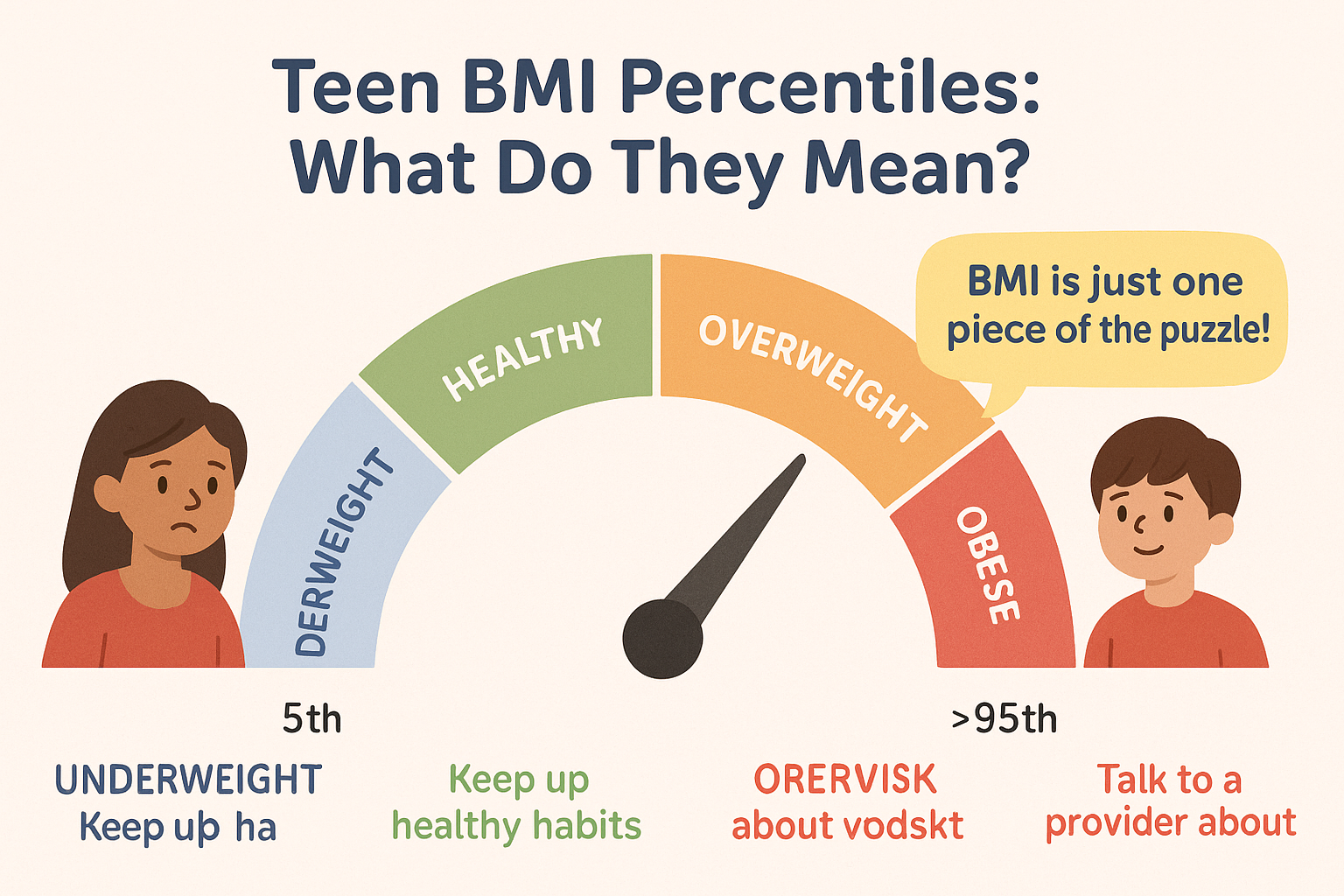
“BMI percentiles help track your teen’s growth, not grade their body. Look for patterns, not perfection.”
Adolescent Obesity and the Role of Habits
When a teenager’s BMI percentile rises above the 95th, it may be categorized as adolescent obesity. But labels alone don’t tell the full story lifestyle habits, emotional well-being, and physical activity play a more important role in shaping long-term health.
Focusing on positive habit-building, not body-shaming, is the key to helping teens grow into their healthiest selves.
What Contributes to Teen Obesity?
- Ultra-processed, calorie-dense foods
- Lack of regular movement (sedentary screen time > 4 hrs/day)
- Irregular sleep patterns or chronic stress
- Hormonal changes that affect appetite, fat distribution, and mood
- Environmental or socioeconomic factors
Habits That Help Prevent Adolescent Obesity
| Healthy Habit | Why It Matters |
|---|---|
| 🍎 Nutritious Meals | Fuels healthy growth, brain development, and energy |
| 🚶♂️ Daily Activity | Boosts metabolism, mood, and muscle tone |
| 💤 Regular Sleep Routine | Supports hormonal balance, reduces cravings |
| 🤝 Family Mealtime & Support | Builds positive relationship with food and self-image |
| 📱 Screen Time Limits | Encourages more physical activity and mental focus |
BMI + Habits = Long-Term Health Strategy
Think of your teen’s BMI percentile as an early signal. If it’s trending high:
- Start small: Swap sugary snacks for whole foods
- Add joyful movement (dancing, walking, team sports)
- Let your teen lead the conversation with guidance, not control
- Use your Teen BMI Calculator regularly as a neutral check-in tool
Remember, change is gradual. Progress isn’t always visible immediately, but every healthy habit builds a stronger foundation.
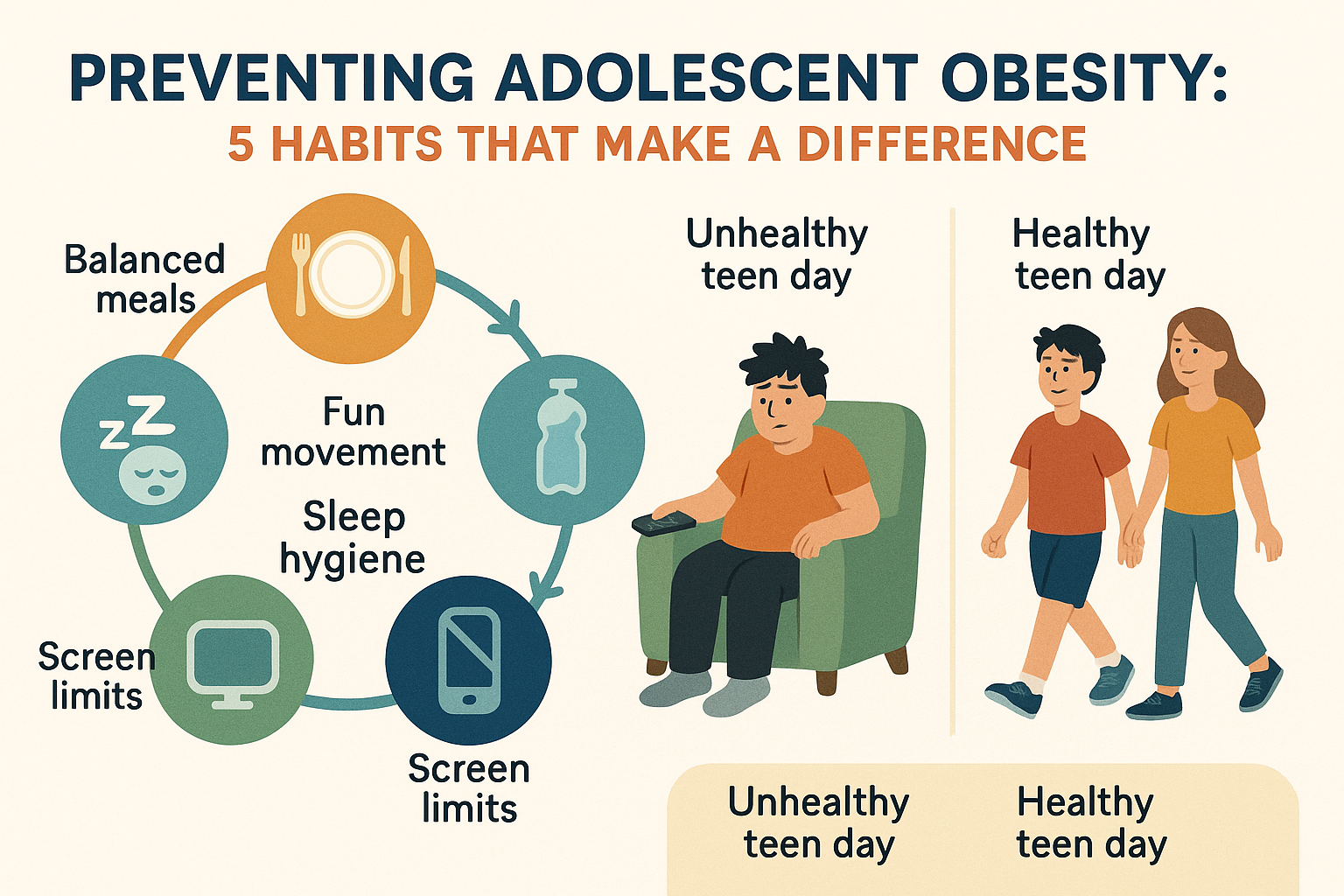
“Teens thrive when we shift the focus from weight to well-being — habits shape health, not just numbers on a chart.”
Helping Teens Understand Their Changing Bodies
Teenagers are navigating more than just academic pressure they’re dealing with growth spurts, hormonal changes, and new body shapes. During this time, it’s easy for them to feel self-conscious, especially when numbers like BMI are brought into the conversation.
That’s why it’s crucial to help teens understand their BMI percentile without judgment or fear.
Common Questions Teens Might Ask:
- “Am I overweight?”
- “Why does my friend weigh less but look bigger?”
- “My BMI percentile changed — is something wrong?”
These are normal questions, and a chance for parents or caregivers to reframe the conversation toward health, not appearance.
Supportive Ways to Talk About BMI:
- Normalize changes: “Everyone grows at their own pace.”
- Focus on function: “Your body helps you do amazing things move, think, grow.”
- Praise healthy actions, not weight: “I noticed you’ve been eating more veggies lately awesome!”
- Use the Teen BMI Calculator as an educational tool, not a judgment tool
Tips for Building Body Confidence:
- Encourage diverse role models and body types
- Avoid comments about weight (even joking)
- Promote sports, hobbies, and creativity over appearance
- Remind them: Growth is messy, and that’s okay
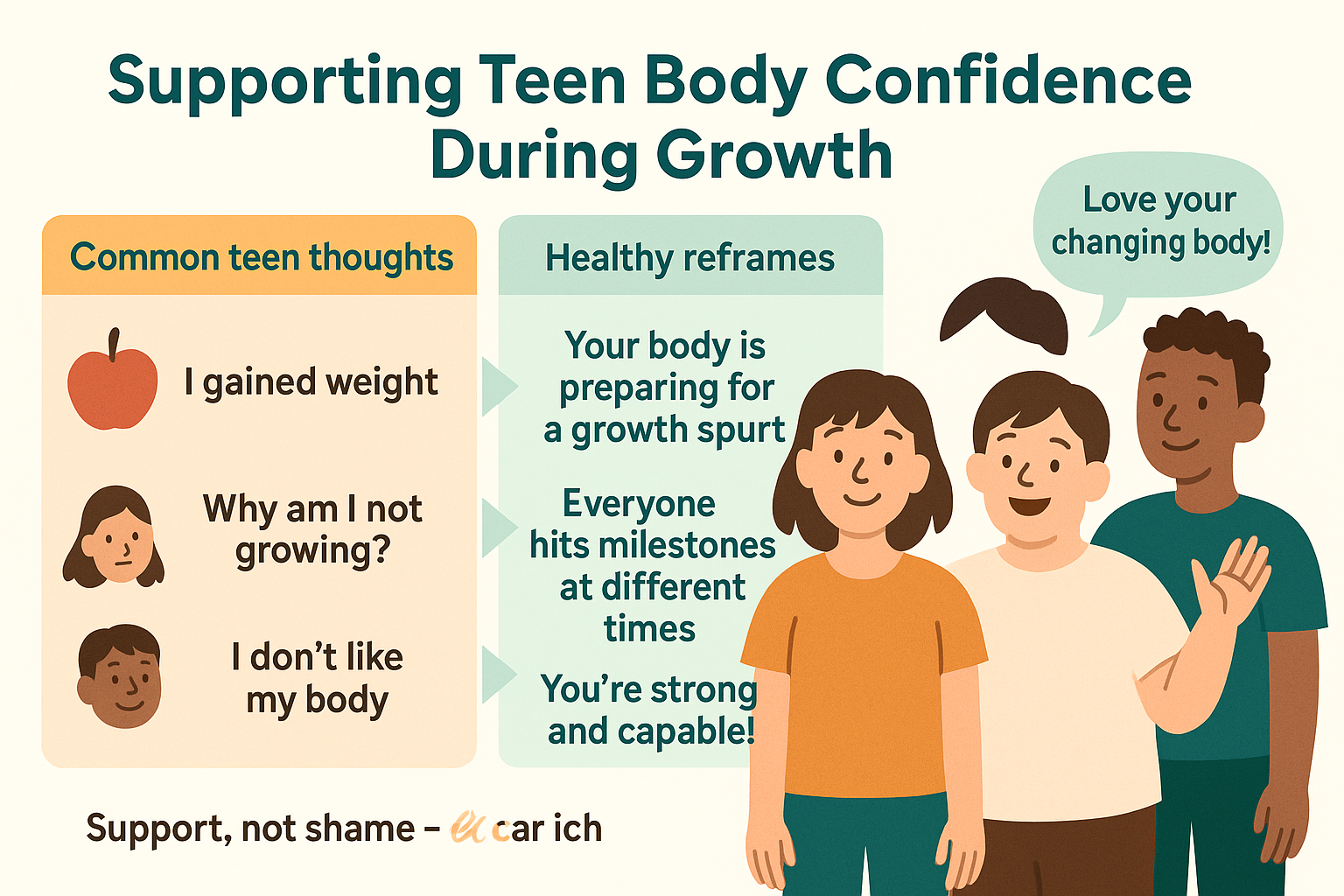
“When teens understand their bodies are evolving not failing they build confidence that lasts beyond any number.”
When to Talk to a Doctor About BMI or Growth Concerns
While most fluctuations in teen BMI are part of normal development, there are times when a visit to a pediatrician or adolescent health specialist can provide clarity and reassurance.
The goal isn’t to fix a “problem” it’s to understand your teen’s unique growth path and ensure they’re developing on a healthy trajectory.
When to Seek Medical Input
If you notice any of the following, it may be time to check in with your child’s doctor:
- Your teen’s BMI percentile is consistently below the 5th or above the 95th
- Their BMI percentile is changing rapidly in a short time
- They’re experiencing low energy, irregular eating habits, or emotional distress related to body image
- Concerns about late puberty, stunted growth, or unusual body composition
- You simply want professional confirmation and peace of mind
What to Bring to the Appointment
| Item | Why It’s Helpful |
|---|---|
| BMI results (from our Teen BMI Calculator) | Shows percentile trends and categories |
| Notes on diet, activity, sleep patterns | Gives the doctor full lifestyle context |
| Family history of growth or weight conditions | May influence medical advice |
| Questions about puberty, mental health, or nutrition | Encourages whole-child conversation |
What the Doctor Might Do
- Review BMI trends over time
- Evaluate if the teen is on track with puberty milestones
- Ask about diet, screen time, activity, and stress
- Provide referrals (e.g., nutritionist, endocrinologist, therapist) if needed
This isn’t about judgment it’s about guidance. Bringing data from a trusted tool like the Teen BMI Calculator can make these conversations clearer and more productive.
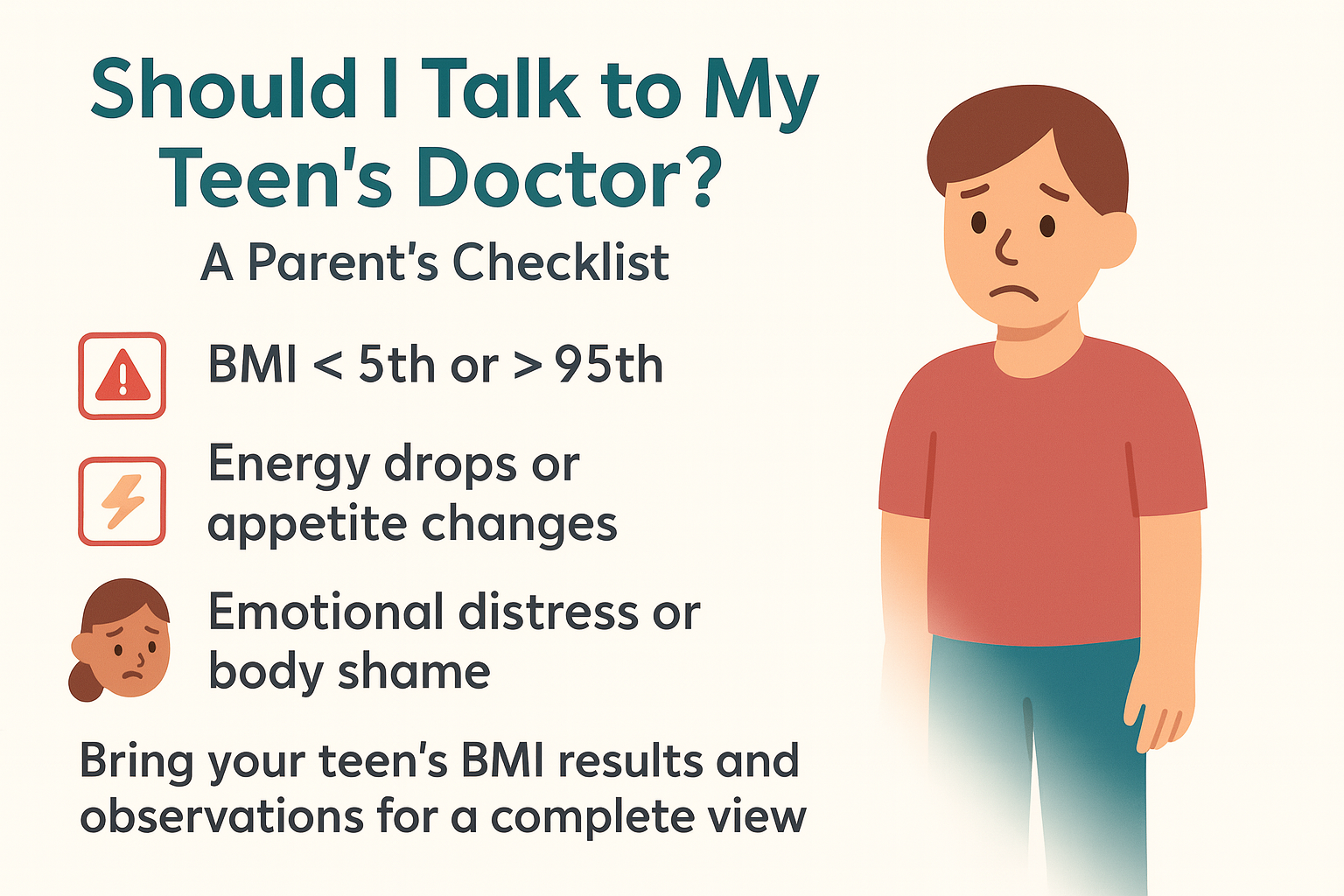
“A doctor’s job isn’t just to check weight it’s to support your teen’s physical, emotional, and developmental health.”
Final Thoughts: Growth Is a Journey, Not a Judgment
Your teen’s body is changing and that’s exactly what it’s supposed to do.
Whether your teenager’s BMI percentile lands in the “healthy” range or not, remember: BMI is just one part of the picture. It doesn’t measure confidence, potential, or character. What matters most are the habits they build, the support they feel, and the health choices made over time.
As a parent or teen, your role isn’t to chase numbers it’s to foster strength, balance, and self-worth.
“Every teen grows at their own pace. Focus less on numbers and more on building a life that feels strong, supported, and healthy from the inside out.”
Want to Monitor Growth Confidently?
Explore our free BMI tools designed for every stage of life:
- 🧑🎓 Teen BMI Calculator — age-based percentiles, growth insights
- 🧒 Kids BMI Calculator
- 👨 BMI Calculator for Men
- 👩 BMI Calculator for Women
- 👵 BMI Calculator for Seniors
- 🌐 General BMI Calculator
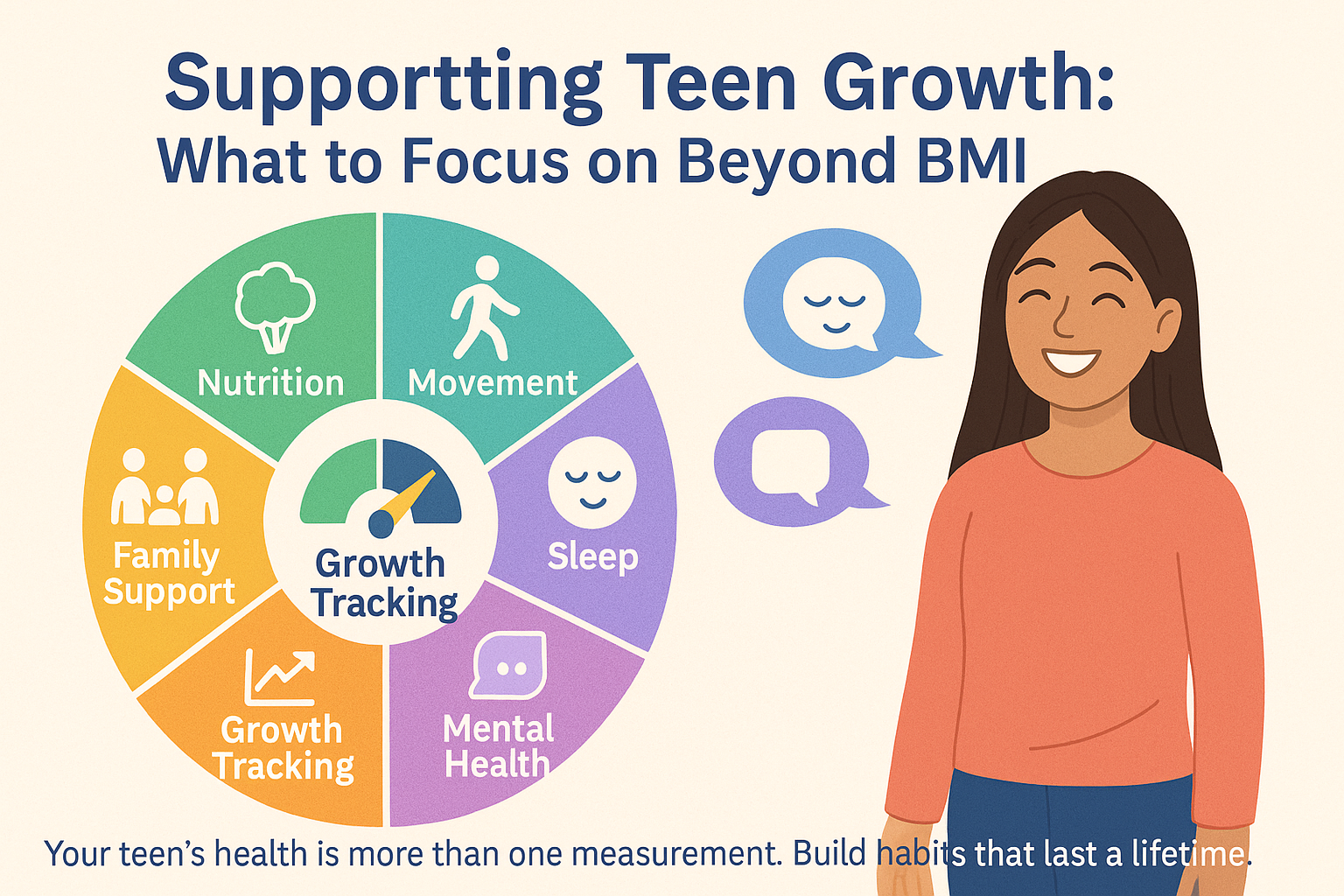
Frequently Asked Questions
What is a normal BMI for a teenager?
A normal BMI for a teenager falls between the 5th and 85th percentile for their age and sex. This range is considered a healthy weight.
How do I interpret BMI percentile results for teens?
Percentiles compare your teen’s BMI to national averages. For example, a 70th percentile means their BMI is higher than 70% of peers of the same age and sex.
Does puberty affect a teen’s BMI?
Yes, puberty can cause BMI fluctuations due to hormonal changes, growth spurts, and differences in fat or muscle gain. That’s completely normal.
How often should I check my teenager’s BMI?
Checking every few months is enough. Focus more on healthy habits and development than frequent measurements unless advised by a doctor.
What’s the difference between adult and teen BMI calculators?
Adult calculators use fixed categories. Teen BMI calculators use age- and sex-specific percentiles to track healthy growth patterns.
Can a teenager have a high BMI and still be healthy?
Yes. Some teens with high BMI may have more muscle mass or unique growth curves. BMI should always be considered alongside activity, nutrition, and well-being.
Where can I calculate BMI for teens accurately?
Use our Teen BMI Calculator to get accurate percentile-based results tailored to your teen’s age and sex.
What should I do if my teen’s BMI is too high?
Focus on building healthy habits: nutritious meals, regular activity, better sleep, and emotional support. Consult a pediatrician for personalized advice.
